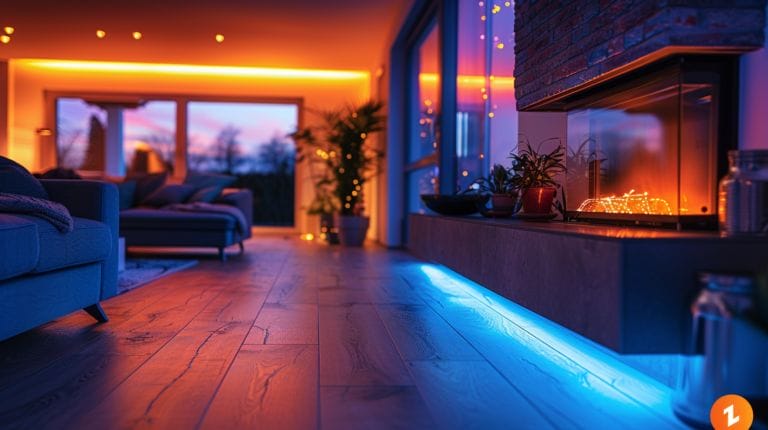How Long Do Fluorescent Light Bulbs Last: Lifespan Revealed
As we explore the topic of how long fluorescent lights last, we uncover an essential aspect often overlooked in our daily lives. The lifespan of these lights holds a key to understanding efficiency and cost-effectiveness in our lighting choices. By delving into the factors that influence their longevity, we can make informed decisions that not only impact our wallets but also play a role in environmental sustainability.
Stay tuned to discover the intricacies of fluorescent light lifespans and how you can optimize their usage for maximum benefit.
Key Takeaways
- Fluorescent lights last approximately 10,000 to 15,000 hours.
- Ballasts can affect lifespan; quality ballasts extend longevity.
- Mercury content impacts disposal; recycle responsibly.
- Proper recycling prevents environmental harm from mercury.
- Recycling initiatives contribute to sustainability efforts.
Understanding the Lifespan of Fluorescent Lights

Maximizing the efficiency and longevity of fluorescent lights in various settings requires an understanding of their lifespan. Known for their energy efficiency, fluorescent lights’ longevity is impacted by factors like the ballast, which regulates the electrical current flowing through the light, and the presence of mercury, which necessitates responsible recycling. By grasping these components’ implications, we can optimize the lifespan of these lights and reduce the need for frequent replacements.
Energy Efficiency: How Fluorescent Lights Compare

Fluorescent lights excel in energy efficiency compared to traditional incandescent bulbs, making them a cost-effective lighting option for many applications. Fluorescent lamps’ design and technology contribute to their superior energy efficiency. Key points include:
- Energy Consumption Comparison: Fluorescent lights consume significantly less power than incandescent bulbs, leading to immediate savings on electricity bills.
- Long-Term Savings: Despite a slightly higher upfront cost, the energy efficiency of fluorescent lights leads to substantial long-term savings due to lower power consumption.
- Environmental Impact: Fluorescent lamps’ reduced energy consumption translates to a smaller carbon footprint, making them an eco-friendly lighting choice.
- Efficiency Over Time: Fluorescent lights maintain their energy efficiency throughout their lifespan, ensuring consistent power savings over the years.
In essence, the energy efficiency of fluorescent lights provides benefits for your wallet and contributes to a more sustainable and environmentally conscious lighting solution.
Using Fluorescent Tube Lights in Different Rooms

When considering the use of fluorescent tube lights in different rooms, it’s important to take into account the specific lighting needs and characteristics of each space. For areas requiring focused task lighting, such as offices or workshops, tube lights offer bright, energy-efficient illumination. On the other hand, for spaces desiring a softer, more ambient light, like living rooms or bedrooms, fluorescent tubes with warmer color temperatures can create a cozy atmosphere.
Room conditions can greatly influence the lifespan of fluorescent tube lights. Ensuring proper ventilation to prevent overheating, avoiding extreme temperatures and humidity levels, and positioning the tube lights for even illumination can all contribute to their longevity and provide the best lighting experience.
Maintenance Tips for Fluorescent Tubes for Lasting Use

Regular maintenance practices can maximize the lifespan of fluorescent tubes. To keep your fluorescent lights shining brightly, consider the following:
- Cleanliness is Key: Dust and dirt can accumulate on fluorescent tubes, reducing their efficiency. Regular cleaning of the fixtures and tubes can maintain peak performance.
- Check for Flickering: Flickering tubes may indicate a problem with the ballast or the tube itself. Promptly addressing flickering issues can prevent further damage and maintain consistent lighting.
- Inspect for Physical Damage: Cracks or dark spots on the tubes can affect their functionality. Regularly inspect the tubes for signs of physical damage and replace them if necessary.
- Proper Installation: Correct installation of fluorescent tubes can prevent issues such as overheating or premature failure. Following manufacturer guidelines for installation can maximize the lifespan of your tubes.
Regular maintenance not only extends the lifespan of fluorescent tubes but also enhances their performance and energy efficiency.
Clear Comparisons: Fluorescent Lights vs. Other Light Types

Comparing fluorescent lights with other types reveals distinct differences in lifespan, energy efficiency, and cost-effectiveness. LEDs outshine fluorescent lights in lifespan, lasting up to 25 times longer, leading to reduced maintenance and replacement costs.
Fluorescent lights consume substantially less power than traditional incandescent bulbs, reducing electricity bills and the carbon footprint associated with lighting. When it comes to cost, fluorescent lights offer a cost-effective lighting solution compared to halogen lights. The initial investment in fluorescent lighting fixtures and bulbs is generally lower than halogen alternatives.
Conclusion
To sum up, understanding the lifespan of fluorescent lights and implementing proper maintenance can help maximize efficiency and longevity.
By comparing energy efficiency and using fluorescent tube lights in various rooms, users can make informed decisions for their lighting needs.
Remembering to handle and dispose of fluorescent lights responsibly, including recycling to properly deal with the mercury content, is essential for both cost savings and environmental sustainability.







